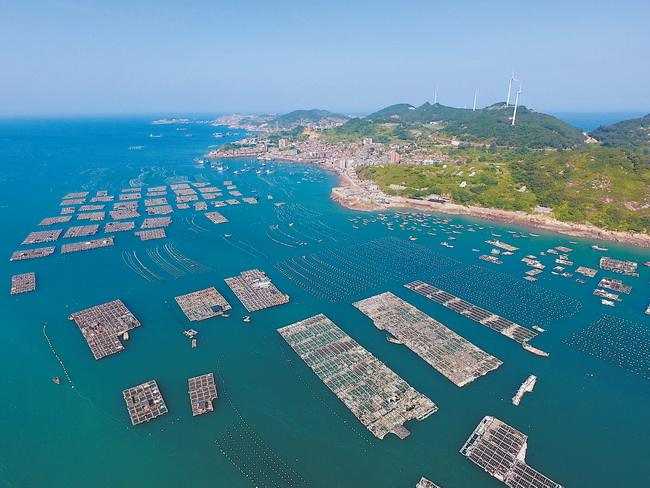



With a verification report issued by the Third Institute of Oceanography, Ministry of Natural Resources, the project becomes China’s first marine fishery carbon sink transaction, marking China’s breakthrough in the field of marine fishery carbon sink trading.
What’s the marine fishery carbon sink?
According to an official from the Third Institute of Oceanography, Ministry of Natural Resources, the carbon sink fishery generally refers to fishery production activities that promote aquatic organisms to absorb carbon dioxide from water bodies, reduce the concentration of carbon dioxide in the atmosphere, and then slow down water acidification and global warming. It can bring comprehensive benefits in many aspects, such as the improvement of marine ecology, the transformation of fishery economy and the improvement of people’s livelihood in fishing areas.
“Marine fishery carbon sink is of great practical significance to carbon-peaking-and-neutrality-oriented economy. The successful practice of this marine fishery carbon sink trading case starts a new chapter in China’s blue carbon trading.” An expert from the Third Institute of Oceanography, Ministry of Natural Resources said that, the successful trading of this pilot project provides a demonstration path towards marketization of marine fishery carbon sink, and it has positive significance to increasing the “green revenue” from fishery, guiding social capital into carbon sink fishery, advancing carbon neutrality progress and so on.
Why was the first trading completed in Lianjiang County?
Lianjiang County boasts a solid foundation of marine industry and the great potential for future development of marine economy. In 2011, Lianjiang County made the plan to build China’s first carbon sink fishery breeding base in the northern waters off Huangqi Peninsula, becoming the first to explore and develop ecological breeding mode. During the “13th Five-Year Plan” Period, Liangjiang’s market-oriented reform of ecological products and its deep-sea ecological breeding were selected as typical experience in building National Ecological Civilization Pilot Zone. At the same time, Lianjiang’s aquaculture industry ranks second among all counties in China, with obvious industrial strength and prospects for development. The total amount of farmed macroalgae and shellfish tops nearly 700,000 tons, accounting for approximately 90 percent of the county’s total, and the economic value of tradable carbon sink can reach up to 960 million yuan.

The picture shows a key fishery breeding base in the coastal waters of Huangqi Peninsula, Lianjiang County
Liangjiang County rises by the sea and thrives towards the sea. Gao Shuangcheng, Deputy Secretary of the CPC Lianjiang County Committee and Magistrate of Lianjiang County People’s Government, said that “The ‘14th Five-Year Plan’ period is crucial for China to peak carbon emissions and achieve carbon neutrality. As a county with strong marine fishery, Lianjiang will definitely do its part in fostering a modern marine economic system, and strive to be a front-runner in developing blue low-carbon economy and demonstrating ‘blue carbon sink’ .”
According to statistics, ocean is the largest active carbon pool on the earth, about 20 times larger than the terrestrial carbon pool and 50 times larger than the atmospheric carbon pool. Ocean absorbs around 30 percent of carbon dioxide emitted into the atmosphere from human activities every year, and the carbon storage cycle of ocean can last thousands of years, playing an irreplaceable role in climate change. Thus, ocean has a huge potential in negative emissions, which is the most win-win and cost-effective way to mitigate global warming at present.